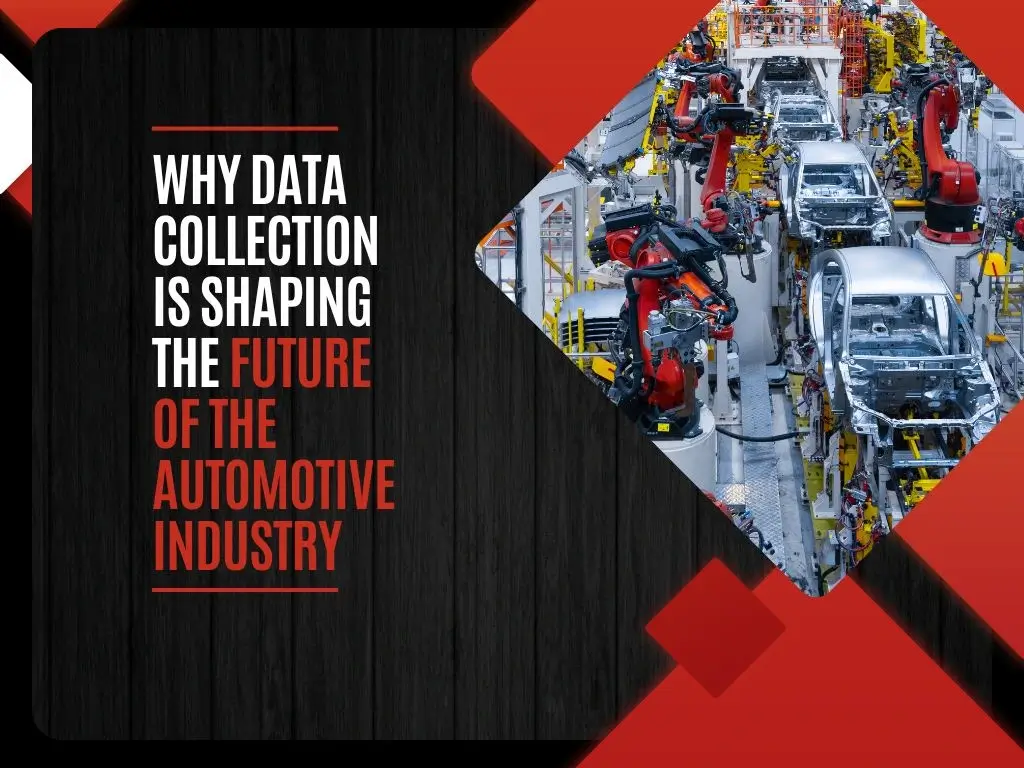Why Data Collection is Shaping the Future of the Automotive Industry
Explore how data collection is revolutionizing the automotive industry, driving innovation in safety, efficiency, and customer experience.

Data collection has become an essential part of the modern automotive industry, transforming the way vehicles are designed, manufactured, operated, and maintained. From improving vehicle safety to enhancing customer experiences and optimizing production efficiency, data collection platforms like Sonatus Collector have been at the heart of the industry’s evolution for the last few years. The automotive industry is undergoing rapid technological advancements in areas such as connected vehicles, autonomous driving, and electric vehicles (EVs), all of which are fueled by vast amounts of data. Understanding why data collection is critical in this context requires examining its impact on several key facets of the industry: vehicle design, manufacturing, customer experience, safety, and future innovations.
1. Vehicle Design and Development
In the modern automotive industry, the development of new vehicles has shifted from a largely trial-and-error approach to a more data-driven process. Automakers collect data from various sources—such as customer feedback, driving patterns, crash statistics, and environmental conditions—to inform decisions about the design, performance, and features of new cars. This data-driven design process allows automakers to create vehicles that meet consumer preferences, regulatory requirements, and environmental standards.
For instance, vehicle manufacturers can use real-time driving data collected from connected cars to gain insights into how drivers interact with their vehicles. By analyzing data on driving behavior, automakers can optimize vehicle features, such as adaptive cruise control, automated braking systems, and energy-efficient powertrains. Similarly, data on road conditions, traffic patterns, and vehicle performance in various climates can help manufacturers create more robust and efficient vehicles.
Furthermore, data collection in the design phase also allows automakers to simulate various conditions and scenarios, such as crash tests or long-term wear and tear. By doing so, they can predict how a vehicle will perform in real-world conditions without needing to physically test every prototype, significantly reducing the time and cost of development.
2. Manufacturing and Production
Data collection plays a pivotal role in improving the efficiency and quality of the automotive manufacturing process. Through the use of sensors, IoT (Internet of Things) devices, and AI-powered analytics, automakers can monitor production lines in real-time. This allows them to identify bottlenecks, predict machine failures, and maintain consistent quality standards.
For example, sensors on the assembly line can detect deviations in part quality or assembly precision, enabling manufacturers to address these issues before they lead to defects in the final product. This real-time monitoring not only helps reduce waste but also ensures that vehicles are built with high precision and reliability.
Additionally, data collection allows for better inventory management. By tracking the flow of parts and materials, manufacturers can optimize supply chains, reduce delays, and minimize excess inventory, which ultimately lowers costs and improves profitability. As the automotive industry increasingly adopts smart manufacturing technologies, salesforce to data lake becomes a crucial tool for ensuring that production is flexible, efficient, and responsive to market demands.
3. Vehicle Maintenance and Aftermarket Services
Once vehicles are on the road, data continues to play a critical role in their ongoing maintenance and operation. Connected vehicles equipped with telematics systems generate vast amounts of real-time data, which automakers can use to monitor the health and performance of individual vehicles. This data can include information about engine performance, tire pressure, fuel efficiency, and battery health. By collecting and analyzing this data, automakers and service providers can predict when a vehicle is likely to need maintenance, such as oil changes or brake replacements, and notify the owner before a failure occurs. This predictive maintenance not only improves vehicle reliability but also enhances the ownership experience by minimizing unexpected breakdowns.
Moreover, data collection allows automakers to offer tailored services to their customers. For example, based on driving patterns and maintenance history, automakers can recommend specific services or upgrades that can improve the vehicle’s performance. This level of personalization enhances customer satisfaction and builds brand loyalty.
4. Enhancing Safety and Security
Safety is a top priority in the automotive industry, and data collection has revolutionized how manufacturers address safety concerns. In the context of autonomous vehicles, for example, data from sensors, cameras, radar, and lidar is continuously collected to enable the vehicle’s AI systems to interpret the surrounding environment and make driving decisions. This data helps autonomous vehicles navigate roads safely, avoid collisions, and respond to unexpected hazards in real-time.
In addition to autonomous driving, data collection from connected vehicles helps enhance overall road safety by enabling vehicle-to-vehicle (V2V) and vehicle-to-infrastructure (V2I) communication. For example, vehicles can share data about their speed, location, and intentions, allowing them to cooperate with one another and avoid accidents. Traffic signals, road signs, and infrastructure sensors can also communicate with vehicles to provide real-time information on road conditions, construction zones, or accidents ahead, helping drivers make better decisions and reducing the risk of accidents.
Moreover, data collected from crash tests, accident reports, and real-world vehicle performance is used to develop more advanced safety features, such as automatic emergency braking, lane-keeping assist, and advanced airbag systems. The analysis of accident data also informs the design of safer vehicles by identifying patterns and areas of vulnerability, enabling manufacturers to create vehicles that better protect occupants in the event of a crash.
5. Connected and Autonomous Vehicles
The future of the automotive industry is increasingly shaped by connectivity and automation. As vehicles become more connected through the internet and data-sharing technologies, they generate vast amounts of data that can be analyzed for a variety of purposes. Connected vehicles can share information with other vehicles, infrastructure, and cloud systems, creating a web of interconnected data that enables real-time decision-making and improves traffic flow, reduces accidents, and enhances the overall driving experience.
Autonomous vehicles, which rely on AI algorithms and sensor data, are another example of how data collection is central to the future of automotive technology. For autonomous driving systems to work safely and effectively, they need to constantly collect and process data from their environment. This data is crucial for identifying pedestrians, other vehicles, road signs, traffic lights, and potential hazards. By continually learning from real-world driving data, autonomous systems can improve their decision-making over time, creating safer and more efficient driving experiences.
Conclusion
Data collection is integral to the modern automotive industry, influencing everything from vehicle design and manufacturing processes to customer experiences, safety, and the future of mobility. By harnessing the power of data, automakers can create smarter, more efficient, and safer vehicles, while also delivering more personalized and seamless experiences for consumers. As the industry continues to embrace advancements in connectivity, automation, and electrification, the importance of data collection will only continue to grow, driving innovations that will shape the future of transportation.



